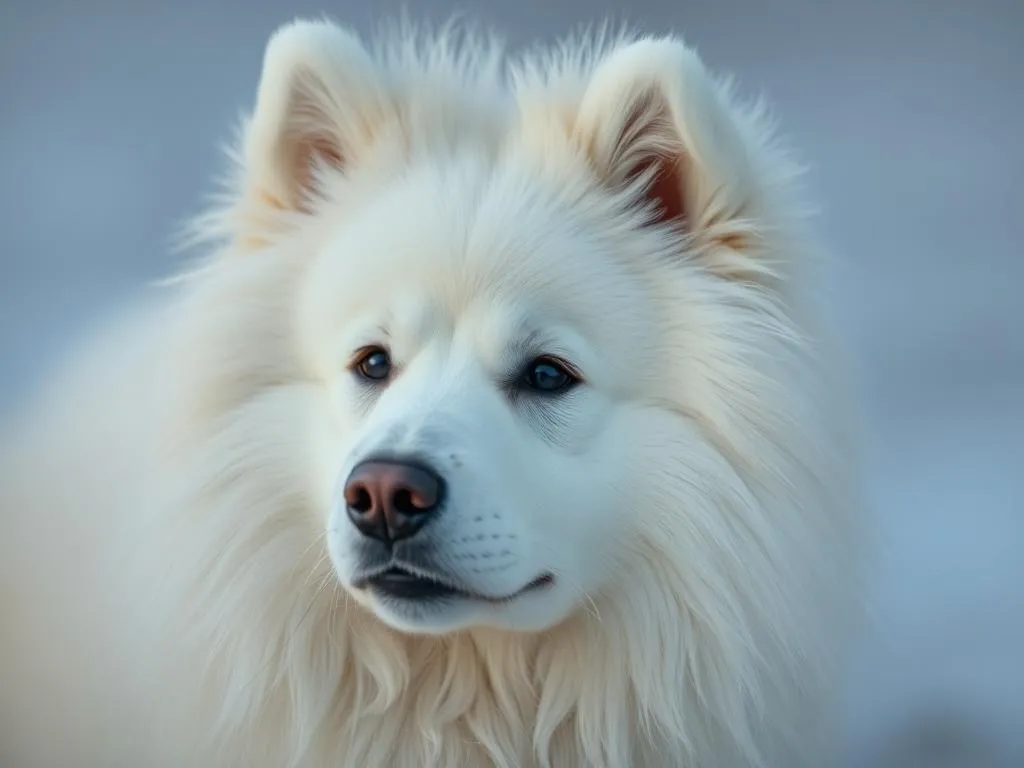
The Samoyed is a stunning breed known for its fluffy white coat and friendly demeanor. Originating from Siberia, these dogs were historically bred by the Samoyede people for herding reindeer and pulling sleds. Today, they are popular family pets, admired not only for their beauty but also for their playful and affectionate nature. However, one of the most important aspects potential owners need to understand is the shedding of this breed.
Understanding how much a Samoyed sheds is crucial for prospective owners. It influences grooming routines, home maintenance, and overall compatibility with a household. Here’s an in-depth look into the shedding habits of Samoyeds, alongside grooming tips and health considerations.
Understanding Samoyed Coat Characteristics
Coat Type and Structure
The Samoyed has a unique double coat, which is one of its most defining features. This double coat consists of two layers: the outer coat, which is long and straight, and the undercoat, which is short, dense, and woolly. The outer coat serves as a protective layer against harsh weather, while the undercoat provides insulation.
During different seasons, the texture of the coat changes. In colder months, the undercoat thickens to offer warmth, while in warmer months, it sheds to help keep the dog cool. This seasonal shift significantly impacts how much a Samoyed sheds during different times of the year.
Shedding Patterns
Samoyeds typically experience two major shedding cycles each year, referred to as “blowing the coat.” This process occurs in spring and fall, when they shed large amounts of their undercoat. Besides these seasonal changes, Samoyeds may also shed moderately throughout the year.
Several factors can influence shedding frequency, including:
- Age: Younger dogs may shed more as they transition from puppy fur to adult coats.
- Health: A dog’s general health can affect shedding; illness or stress may lead to increased fur loss.
- Diet: A poor diet can result in unhealthy skin and coat, increasing shedding.
How Much Do Samoyeds Shed?
Shedding Estimates
On average, a Samoyed may shed between 1 to 2 cups of fur per week, particularly during shedding seasons. This can vary depending on the individual dog’s health, age, and environment.
When compared to other breeds, Samoyeds tend to shed more than many others, especially those with single coats. In conversations with Samoyed owners, a common theme is the need for consistent grooming to manage the sheer volume of fur that can accumulate around the home.
Visual Indicators of Shedding
Recognizing normal versus abnormal shedding is essential for maintaining your Samoyed’s health. Normal shedding is characterized by occasional fur loss that can be managed with regular grooming. However, excessive shedding may indicate underlying issues.
Signs of excessive shedding include:
- Bald patches: Areas where fur is missing could signal a health issue.
- Increased fur in the environment: More fur than usual on furniture or clothing can indicate abnormal shedding patterns.
- Skin irritation: Redness or flakiness of the skin may be a sign of allergies or other skin conditions.
Grooming Practices to Manage Shedding
Brushing Techniques
Regular brushing is crucial for managing a Samoyed’s shedding. It not only helps reduce the amount of fur in your home but also promotes a healthy coat.
Recommended Tools for Brushing
- Slicker brush: Excellent for reaching the undercoat.
- Undercoat rake: Effective for removing loose fur from the undercoat.
- Bristle brush: Good for smoothing the outer coat.
Frequency of Brushing Sessions
Ideally, you should brush your Samoyed at least 2-3 times per week. During peak shedding seasons, daily brushing is recommended to keep fur accumulation at bay.
Tips for Effective Brushing
- Brush in the direction of hair growth: This helps to avoid discomfort and makes the process smoother.
- Section the coat: Work in manageable sections to ensure thorough grooming.
- Be gentle: Avoid pulling on tangles, as this can irritate the skin.
Bathing and Cleaning
Bathing plays a significant role in managing shedding. A clean coat reduces the amount of loose fur and dander in your home.
Importance of Regular Baths
Regular baths help to remove loose hair and dirt, promoting a healthier coat. However, over-bathing can strip natural oils, so it’s essential to find a balance.
Recommended Shampoo Types for Samoyeds
Choose a gentle, hypoallergenic shampoo designed for dogs. Look for products that contain natural ingredients and are free from harsh chemicals.
How Bathing Affects Shedding
While bathing does help remove loose fur, it’s important to note that it should not be the only method of managing shedding. Regular brushing combined with occasional baths will yield the best results.
Professional Grooming
Though many Samoyed owners prefer to groom their dogs at home, professional grooming can be beneficial, especially during shedding seasons.
Advantages of Hiring a Groomer
Professional groomers have experience and tools that can effectively manage shedding. They can also spot potential skin issues that may require attention.
What to Look for in a Grooming Service
Seek out a groomer familiar with the Samoyed breed. They should understand the specific grooming needs, including proper brushing techniques and bathing practices.
Health Factors Affecting Shedding
Diet and Nutrition
A healthy diet is vital for maintaining a Samoyed’s coat. Poor nutrition can lead to dull fur and increased shedding.
Impact of Diet on Coat Health
Foods rich in Omega-3 and Omega-6 fatty acids can improve coat health and reduce shedding. Consider incorporating high-quality dog food that lists these ingredients.
Recommended Foods for a Healthy Coat
- Fish oil supplements: Known for promoting healthy skin and coat.
- High-quality kibble: Look for brands that prioritize natural ingredients.
Allergies and Skin Conditions
Samoyeds are prone to certain allergies that can lead to excessive shedding.
Common Allergies in Samoyeds
Environmental allergens (like pollen), food allergies, and flea allergies can all affect your dog’s skin and coat health.
Signs of Skin Problems
Watch for signs like itching, redness, or unusual scratching. If you notice these symptoms, consult your veterinarian for a proper diagnosis and treatment.
Environmental Factors
The environment plays a significant role in how much a Samoyed sheds.
How Climate and Living Conditions Affect Shedding
Extreme temperatures can influence shedding patterns. In hotter climates, a Samoyed may shed more frequently to regulate body temperature.
Tips for Managing Shedding in Different Environments
- Maintain a cool indoor temperature: This can help reduce excessive shedding.
- Limit exposure to allergens: Regularly clean your home to reduce dust and dander.
Preparing for a Shedding Samoyed
Home Maintenance Tips
Living with a shedding Samoyed requires some adjustments in home maintenance.
Best Practices for Cleaning Up Dog Hair
Utilize lint rollers, vacuum cleaners with pet hair attachments, and microfiber cloths for effective fur removal. Regular cleaning will minimize the presence of dog hair around your home.
Recommended Products for Fur Removal
- Pet hair vacuums: Specifically designed to tackle pet fur.
- Fur removal brushes: Ideal for furniture and clothing.
Lifestyle Adjustments
Adapting your lifestyle can also help manage shedding better.
How to Adapt Your Routine
Consider establishing a regular grooming schedule, and incorporate cleaning practices into your weekly routine to combat fur buildup.
Creating a Pet-Friendly Home Environment
Designate specific areas for your Samoyed and maintain pet-friendly furniture and surfaces. This can help contain shedding to specific areas, making cleanup easier.
Conclusion
Owning a Samoyed comes with its unique challenges, especially in terms of shedding. Understanding the breed’s coat characteristics, grooming needs, and health considerations is vital for potential owners. By investing time in grooming and adopting appropriate home maintenance practices, you can enjoy the companionship of this beautiful breed without being overwhelmed by fur.
For those considering a Samoyed, remember that along with their adorable looks and loving nature comes the responsibility of managing their shedding. With the right commitment, a Samoyed can be a delightful addition to any family.
FAQs
How often should I groom my Samoyed?
Aim to brush your Samoyed at least 2-3 times a week, increasing frequency during shedding seasons.
Do all Samoyeds shed the same amount?
While shedding can vary by individual, most Samoyeds will experience similar shedding patterns due to their breed characteristics.
How can I reduce shedding in my home?
Regular grooming, maintaining a clean environment, and using effective cleaning tools can significantly reduce shedding in your home.
By understanding the nuances of shedding in Samoyeds, you can prepare yourself for the joys and responsibilities of pet ownership.









